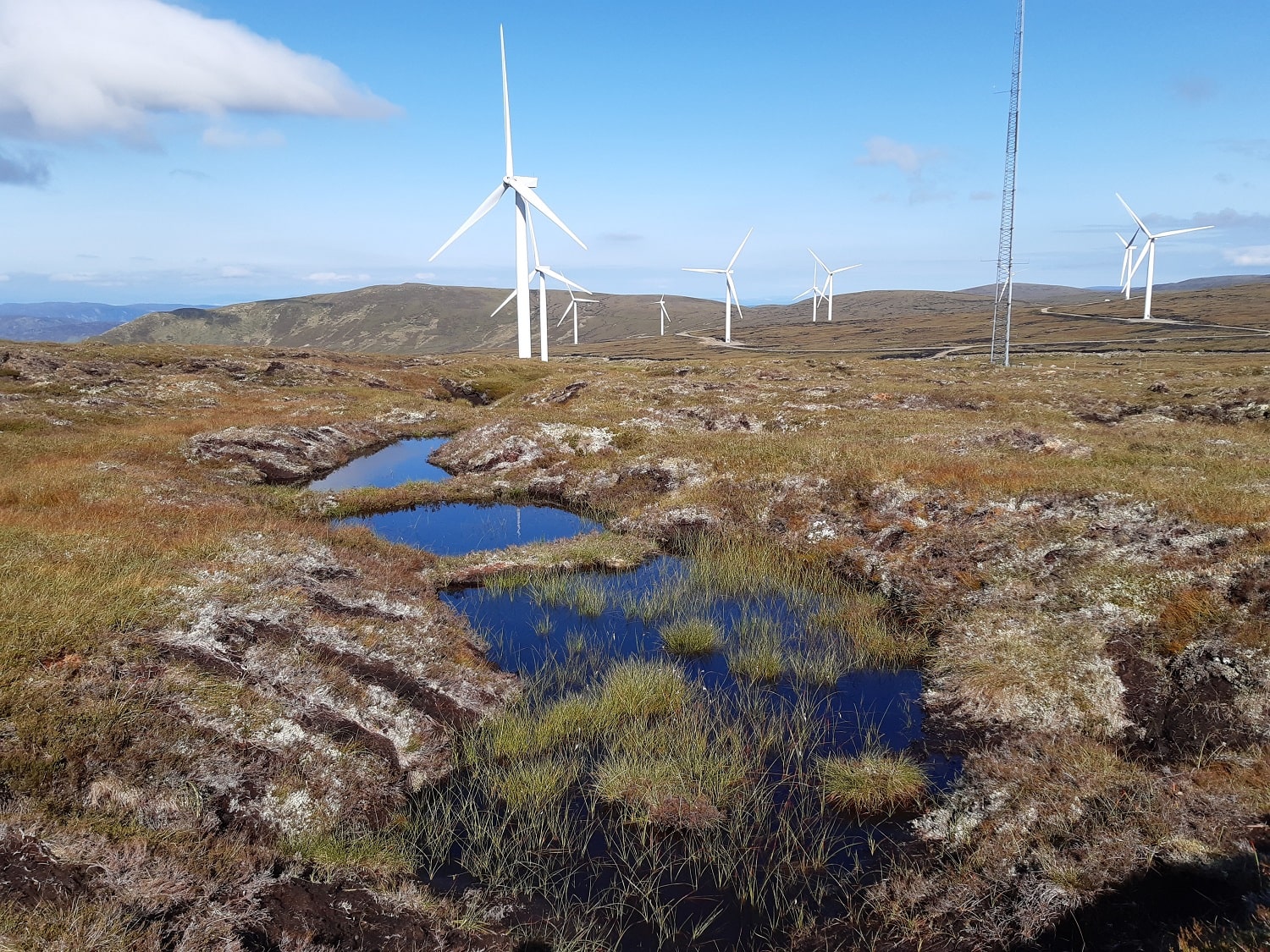





0

SSE Renewables actively manages 1,688 hectares of peatland habitat across 10 operational wind farm sites as part of a total of almost 20,000 hectares of land under Habitat Management Plans across Scotland. Peatland management and restoration is being undertaken using a variety of techniques and approaches. This includes 253 hectares of targeted peatland restoration such as ditch blocking, 390 hectares of livestock reduction on sensitive peatland habitats and 355 hectares of forest removal to reduce the drying-out effect caused by trees. SSE Renewables has also implemented ‘no muirburn’ policies on 690 hectares of peatland habitat at its wind farm sites. Heather moorland is often burnt to provide fresh growth for game and livestock, but this process can be damaging to peat.
At the 33-turbine Dunmaglass Wind Farm Ltd. (a joint venture between SSE Renewables and Greencoat UK Wind Plc), south of Inverness, work has been carried out to improve peatland habitat conditions by blocking hill drains to aid in water retention, which provides the wet conditions required by for blanket bog to thrive. SSE Renewables has also carried out complex peat hag reprofiling. Peat hags are created when water flow erodes downwards into the peat, or where a fire or overgrazing has exposed the peat surface to dry out and blow or wash away. Where these eroded parts of the habitat, they are repaired to prevent further damage and to promote the growth of key peatland species such as cotton grasses and peat-forming sphagnum moss, a key bog ingredient which helps to sequester carbon from the atmosphere - also used in the First World War as a wound dressing, due to its antiseptic properties.
SSE Renewables has committed to restore a further 330 hectares of peatland habitat across existing operational sites and sites which are currently under construction over the next five years. The Viking Energy Wind Farm located on Shetland’s central mainland has committed an ambitious 260 hectares of peatland restoration which is programmed to commence concurrently with the wind farm’s construction phase. The approach to peatland restoration ranges from the re-establishment of peat, and ultimately blanket bog, in areas where historic erosion has significantly depleted the peat resource; the blocking of erosion gullies through the installation of dams; reprofiling gully edges and peat hags and establishing sheep exclosures to control grazing pressures.
